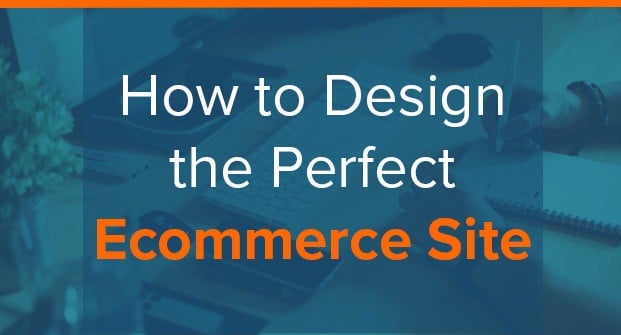With 1.46 billion people worldwide now opting to buy online, ensuring your ecommerce store is ahead of the game has never been more crucial for the success of your online business. The ecommerce market is saturated with over 12 million ecommerce sites online, so just how can you stay ahead of the competition and drive more conversions and higher revenues?
We’ve been talking to ecommerce agency Nublue about what exactly goes into designing the perfect ecommerce site. Matt Hutchinson is Nublue’s Agency Manager, with 11 years expertise in the digital industry. Here’s what he had to say about how to make sure your ecommerce categories, product pages and checkout process are designed with conversions in mind…
Hi Matt – Designing the perfect ecommerce store sounds like quite a feat – what are the key components to consider when putting it all together?
There are 4 key components that every ecommerce owner should think about before starting on a new online project. These are functionality, usability, design and trust/security. Your site needs to be intuitive, easy to navigate, and streamline the customer journey as seamlessly as possible straight through to checkout. You need to inspire with a design that reflects your brand and engages your customers, and you have a responsibility to ensure your customers are safe and secure buying online with you. Online customers are savvy, and they expect to see certain trust signals from your website – without those, they may not take the risk, and decide to shop elsewhere.
Ok, so where do you start when designing an ecommerce site that converts?
Well before you even start thinking about how your customers are going to browse your products, or what colour palette to splash across your home page, you need to go right back to basics. Who exactly are you trying to attract? Who are your customers? What incentivizes them? What are their online shopping habits?
Once you’ve identified your customers and what makes them tick, then you need to pay close attention to your customer journey. How do you want them to navigate through your site to reach your conversion goals? To answer this, you’ll need to identify your core conversion points.
For most ecommerce stores these will be: the category pages that make it easier for customers to browse your product range and find exactly what they’re looking for; the product pages that motivate your customers to make a purchase decision; and the checkout process which should make it as easy as possible for your customers to complete their purchase.
How can ecommerce owners optimize these core conversion points for increased conversions? Let’s start with the category pages – what features should not be missed here?
The main feature of a category page should be the ability to refine the list of products that you’re looking at – filtering, or merchandising, allowing the customer to get the most relevant sub-set of products in as few clicks as possible.
As with the whole of your site, navigation should be intuitive and easy to understand. The category page is no exception, so navigating through categories and sub-categories should be displayed clearly.
The category page should also show as clear as possible what the category represents, therefore a good quality, prominent feature banner is essential, alongside a clear concise title and brief introduction copy.
The category page is a great opportunity to inspire your customers, so featuring a few ‘best-selling’ or ‘most popular’ products here could help move your customers along their journey.
Great, and how do the product pages differ – what’s key to include here?
High quality images are the best way to showcase your products. Ensure you have a range of images to show off your product at all angles, highlighting any key selling features. A 360 degree product view or even video could help give your customers a clearer idea of exactly what your products have to offer.
Inspire and educate your customers with engaging copy that is concise and encourages customers to make that final purchase decision. Ensure product descriptions are comprehensive and give the customer all the specifics they need to know.
Customer reviews can really help to boost trust with your products. As well as written reviews ensure you show striking visuals, like star ratings, as well.
Again, easy navigation is key to enable the customer to browse across various products until they find the right one for them. Providing breadcrumbs back to the sub-category and category pages is a simple way to allow customers to stay on their exploration path.
When considering offers, use percentage savings where possible. Ensure delivery information is clear, whether this is free or not. Customers may be put off by unexpected costs appearing during the checkout process, so ensure you’re upfront with delivery costs.
Making it easy for customers to choose from product variables and displaying product availability are also key in encouraging that conversion along.
Last, and by no means least, a clear, striking call to action to ‘add to basket’ should be prominent. Speak to your developers about making this transition as smooth as possible, allowing your customers to continue browsing other products before completion. This could be a good time to suggest featured complementary products to encourage additional purchases.
Ok, so once the customer is ready to proceed, how do you ensure the checkout process is a success?
The key here is to keep it simple. You don’t want to add any unnecessary obstacles that could turn your customers off from completing their purchase. For example, give customers the opportunity to checkout as a guest, only requesting essential information, with the option for them to register their full details later. Also, consider ‘enclosed checkouts’ whereby the main sat navigation is removed to take away any unnecessary distractions.
Allow customers to review their purchases clearly. Show product thumbnails, cost and variation breakdowns, and the chance to amend the quantity. The total cost should be clear at this point, with a prominent call to action to complete checkout.
Security cues should also be prominent. Customers need to be reassured that their personal details are safe.
If you offer multiple delivery and payment options, display these clearly, and keep delivery detail fields as simple as possible.
Is there anything else to consider as part of the customer journey?
Spare a thought for the post-purchase experience. Ensure you have a confirmation page that is clear the customer’s order has been completed with an order number for tracking. Encourage them to interact with your social channels, and give them the opportunity to fill out their details to fully register if they didn’t at the beginning of the checkout process.
What do you think is behind successful ecommerce design and development?
An expert team, a thorough brief and smooth project management throughout. It’s important for any ecommerce owners using a digital agency to make sure they have a good communication channel both with the agency and internally with stakeholders. Having everyone up to date and singing from the same page can really help to move your ecommerce project along efficiently.
For more great advice on ecommerce sites, check out these web design tips to increase your sales!




